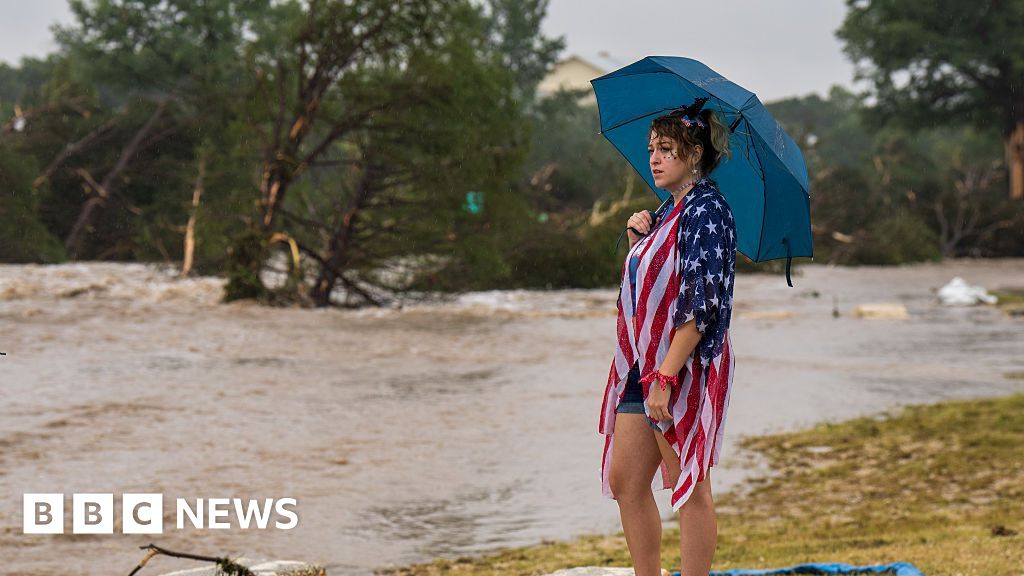Weeks after being rattled by thousands of mostly small-scale earthquakes, the island of Santorini, the jewel in the crown of Greece’s tourism sector, is determined to return to business as usual — even as the quake phenomenon remain a mystery.
The tourism-dependent island, which had been enjoying a strong comeback after the coronavirus pandemic, is counting on it.
The first two cruise ships of the season arrived on the last two Sundays of March, and more than 40 are due this month, kicking off a year in which the union of cruise ship owners has predicted a 10 percent increase in cruise visitors over last year.
But hoteliers are still expecting a slower year, with bookings down about 30 percent compared with 2024.
“Things have woken up over the past couple of weeks,” said Alexis Yannoulatos, who runs the Blue Dolphins hotel and the Grand View on Santorini’s caldera, the rim of an ancient volcano that gave the island its unique shape, multicolored beaches and rock formations. But he said that April was likely to be a “miserable” month for tourism revenues.
Mr. Yannoulatos, who hosted visitors from South Korea at the height of the quake crisis in mid-February, said that occupancy at his hotels was 30 percent for April, with reservations for May and the summer months expected to rise to about 50 percent.
Maria Manousoudaki, who owns the cliff-side Alti Suites in the island’s southwest, said that bookings were “coming in dribs and drabs” for the next couple of months, but that she would be opening half full this week, with visitors from Britain, France and Israel and the United States.
The island, which has a population of 15,500 and typically hosts more than three million visitors annually, had previously worried about over-tourism, and even this week, the authorities launching Santorini’s tourism campaign insisted on the importance of “sustainable” tourism. As of June 1, cruise ship visitors must pay a charge of 20 euros, about $21.50, a measure approved last year to reduce the strain of excessive crowds on the island.
But a few weeks ago, thousands of earthquakes rattled the island, sometimes every few minutes, sending most residents fleeing. The authorities closed schools and deployed emergency services to the region, and experts scrambled to interpret the tremors, which peaked with a 5.3-magnitude temblor on Feb. 10.
As the quakes eased in late February and early March, residents returned, schools reopened and hoteliers resumed renovations in preparation for Easter and summer visitors. Now, most tremors are less than magnitude 3, basically imperceptible, and life on the island is returning to normal.
Yet the quake phenomenon remains unexplained.
“We still haven’t come to a conclusion about the causes,” Athanassios Ganas, the research director at the National Observatory of Athens’ geodynamics institute, said this week.
Some cliff-side areas that are prone to landslides will remain off limits until May 15 as earthquake experts seek ways to minimize risk, Mayor Nikos Zorzos told reporters at the launch of the island’s tourism campaign at the Acropolis Museum in Athens on Tuesday.
“There’ll be a bit of numbness at the beginning, but the season has opened — we’re ready,” he insisted.
Greece’s tourism minister, Olga Kefalogianni, told the event that Santorini was “returning to normality” and that it “remains a safe and hospitable destination,” adding that the safety of residents and visitors “is our absolute priority.”
The quake crisis has also affected the island’s seasonal work force, with the tremors adding to longstanding concerns by workers over the long hours required at summer resorts and a lack of year-round benefits like health insurance, said Giorgos Diamantopoulos, the general secretary of Santorini’s association of traders and business professionals.
Recruitment has already begun for the 25,000 seasonal workers whom the island’s tourism sector relies on, he said, adding that hires so far have been from Albania, Bangladesh, India, Pakistan and the Philippines. Labor ministry statistics showed that just over 2,600 workers were hired in March.
In the meantime, scientists are trying to understand the recent earthquakes.
Researchers are using seismic monitors and remote-controlled underwater vehicles to study the tremors and the area’s volcanoes — though they stress that no major eruption is expected, the last one having occurred 3,500 years ago.
And on Monday evening, foreign scientists joined their Greek counterparts by video link for a discussion in Athens to analyze the tremors and mild volcanic activity with the help of artificial intelligence. They agreed on one thing: The earthquake sequence was unprecedented and remarkable.
As for the prospects for a strong quake occurring, Mr. Ganas said the data suggested that it was unlikely, even as the region has the potential for a temblor of up to a magnitude of 7.1.
The island’s hoteliers are bracing for both geological and financial turmoil, although Ms. Manousoudaki said she was more worried about monetary losses than a possible large earthquake, given the resilience of Santorini’s buildings.
“It’s true that many buildings on the caldera are basically clinging to the cliffs,” she said. “But they’re built to withstand earthquakes,” she added. “I feel safer here than I would in Athens.”
Source link


















